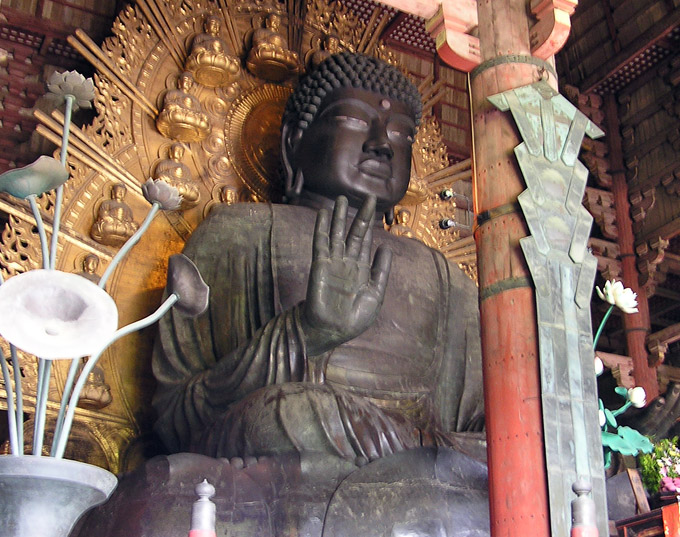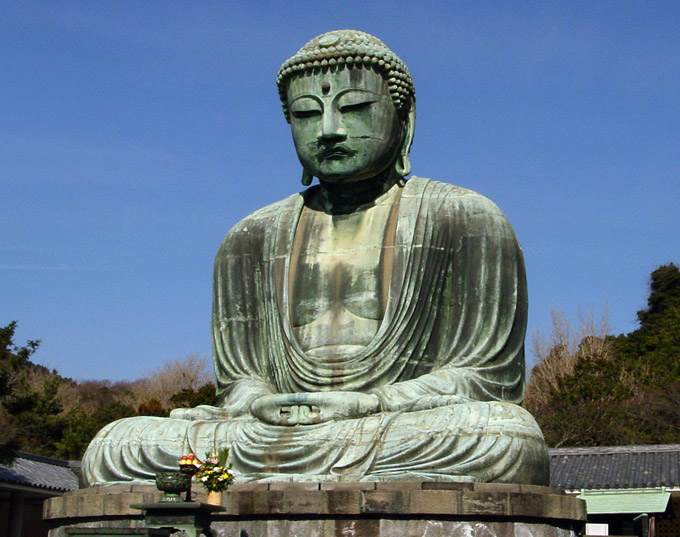| Lit.
three great Buddhas. The three largest images in the history of Buddhist
statuary in Japan. Originally the sandaibutsu were said to be the
Great Buddha in Toudaiji ĺ, Nara; the Buddha in Taiheiji ž˝, Osaka; and
the Buddha in Sekidera Ö, Shiga prefecture. In later centuries, after the
latter two statues were lost, this designation changed and the Buddhas of
Toudaiji, Koutokuin ż@ in Kamakura (Kanagawa prefecture), and the Asuka Buddha in Angoin Ŕ@
(formerly part of Houkouji @ť) Nara, were referred to as the sandaibutsu.
The Great Buddha of Nara Nara Daibutsu ŢÇĺ§ was consecrated in the year
752. It is a seated bronze figure 14.73 m high representing Vairocana
Buddha *Rushanabutsu
á¸Őߧ, and although it has been damaged by fire on numerous occasions the
original figure is still preserved in Toudaiji. The Great Buddha of Taiheiji,
was a standing figure of the *Kannon Ďš 18m high. This figure
was said to have inspired the building of the Nara Daibutsu, but it was
very seriously damaged in 1086. The seated figure of *Miroku íčÓ in Sekidera, was destroyed in an earthquake in 976. It was restored
by the sculptor Koushou NŽ, and the new statue in wood and lacquer, completed
in 1018, measured 7.5 m in height. This in turn was destroyed in fire
caused by war in the period 1596-1615. The Asuka Daibutsu ňšĺ§ is a bronze
statue 2.75m high, thought to represent *Shaka ßŢ. It is the oldest
surviving Buddhist statue in Japan today, estimated to have been completed
in the year 609. Temple legend says that the sculptor was the famous Kuratsukuri
no Tori Ćě~. The statue sits on a stone pedestal in the cross legged posture
known as *kekkafuza
ćććĺż. The Kamakura Daibutsu qĺ§ is a cast bronze seated figure representing *Amida ˘íÉ. It was made in the mid-Kamakura period; some records suggest that casting may have begun in 1252.
The statue is 11.5m high, and combines stylistic influences from Southern
Sung China in the face and body with Unkei ^c (?-1223) style draperies. |




